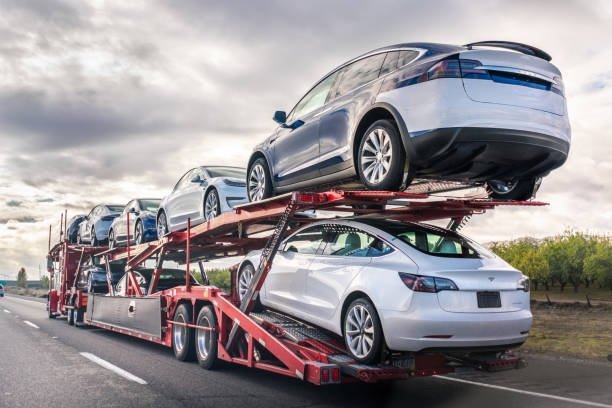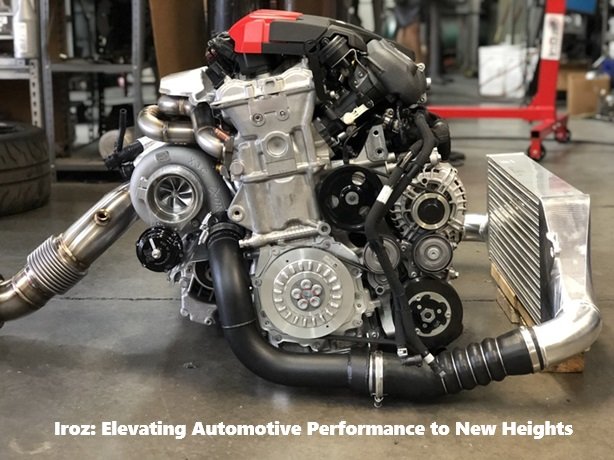Autonomous driving is no longer just a futuristic concept—it’s becoming a reality that is poised to revolutionize the automotive industry. From self-driving cars to advanced driver-assistance systems (ADAS), autonomous technology is transforming how vehicles are designed, manufactured, and driven. This article explores the profound impact of autonomous driving on the automotive industry, examining its influence on vehicle design, safety, regulations, consumer behavior, and the future of mobility.
1. The Evolution of Autonomous Driving
The journey toward autonomous driving has been marked by significant technological advancements. The development of autonomous vehicles (AVs) can be traced back to early experiments with automated systems in the 1950s. However, it wasn’t until the 21st century that significant progress was made, thanks to the convergence of technologies such as artificial intelligence (AI), machine learning, sensors, and real-time data processing.
Today, autonomous vehicles are categorized into five levels, ranging from Level 0 (no automation) to Level 5 (full automation). Levels 2 and 3 represent partial automation, where the vehicle can handle some driving tasks, while Level 4 vehicles can operate without human intervention under certain conditions. Level 5 represents fully autonomous vehicles that require no human input.
2. Impact on Vehicle Design and Manufacturing
Autonomous driving is reshaping vehicle design in ways that were previously unimaginable. Traditional vehicles are designed with the driver as the focal point, but autonomous vehicles (especially at Level 4 and above) shift the focus toward passengers. As a result, vehicle interiors are being reimagined to enhance comfort, convenience, and entertainment, transforming cars into mobile living spaces.
Furthermore, the integration of advanced sensors, cameras, and LiDAR (Light Detection and Ranging) technology into vehicles requires significant changes in vehicle architecture. Automakers are investing heavily in developing platforms that can accommodate the complex hardware and software systems needed for autonomous driving.
The manufacturing process is also evolving to meet the demands of Autonomous Technology. Traditional assembly lines are being adapted to incorporate more sophisticated components and software systems. Moreover, automakers are forming partnerships with tech companies to accelerate the development and integration of autonomous driving technologies.
3. Enhancing Safety and Reducing Accidents
One of the most significant promises of autonomous driving is its potential to enhance road safety. Human error is a leading cause of accidents, and autonomous vehicles are designed to eliminate or reduce these errors. By leveraging AI, machine learning, and real-time data processing, autonomous vehicles can make split-second decisions to avoid collisions, maintain safe distances, and navigate complex traffic scenarios.
Advanced driver-assistance systems (ADAS), such as adaptive cruise control, lane-keeping assist, and automatic emergency braking, are already improving safety in modern vehicles. As these systems evolve into fully autonomous features, the potential to reduce accidents and save lives becomes even more pronounced.
However, achieving a flawless safety record is challenging. Autonomous vehicles must be able to handle a wide range of driving conditions, including adverse weather, unpredictable human behavior, and complex urban environments. As a result, extensive testing and validation are required before fully autonomous vehicles can be deployed on a large scale.
4. Regulatory Challenges and Legal Considerations
The rise of autonomous driving presents significant regulatory and legal challenges. Governments around the world are grappling with how to create frameworks that ensure the safe and responsible deployment of autonomous vehicles. Key regulatory issues include:
- Safety Standards: Establishing uniform safety standards for autonomous vehicles is crucial. These standards must address the performance of AI systems, sensor accuracy, and the ability to respond to various driving conditions.
- Liability: Determining liability in the event of an accident involving an autonomous vehicle is a complex issue. Questions arise about whether the manufacturer, software developer, or vehicle owner should be held responsible.
- Data Privacy: Autonomous vehicles generate vast amounts of data, raising concerns about data privacy and cybersecurity. Regulations must ensure that this data is protected from unauthorized access and misuse.
The legal landscape is still evolving, and different countries have adopted varying approaches to regulating autonomous vehicles. In the United States, for example, the federal government provides guidelines, while individual states have the authority to create their regulations. In contrast, the European Union is working toward a unified regulatory framework for autonomous driving.
5. Shifting Consumer Behavior and Market Trends
The advent of autonomous driving is also changing consumer behavior and market dynamics in the automotive industry. As autonomous vehicles become more prevalent, traditional car ownership models may shift toward shared mobility and ride-hailing services. Companies like Waymo, Uber, and Tesla are already exploring the potential of autonomous ride-sharing fleets.
Autonomous driving technology is also influencing consumer preferences in vehicle design and features. Consumers are increasingly looking for vehicles equipped with the latest ADAS technologies, and this demand is driving innovation in the industry. Additionally, the convenience and efficiency offered by autonomous vehicles may lead to a decline in the importance of traditional performance metrics such as horsepower and acceleration.
6. The Future of Mobility: Beyond Cars
Autonomous driving is not limited to passenger cars; it has the potential to transform other forms of transportation as well. Autonomous trucks, for example, could revolutionize the logistics and freight industries by enabling more efficient and cost-effective transportation of goods. Companies like Tesla, Volvo, and Daimler are already developing autonomous truck technology.
Moreover, autonomous driving is likely to play a crucial role in the development of smart cities. Integrating autonomous vehicles with urban infrastructure can lead to more efficient traffic management, reduced congestion, and improved public transportation systems. Autonomous shuttles and buses could become a common sight in cities, providing convenient and sustainable transportation options.
7. Challenges and Ethical Considerations
Despite the promising potential of autonomous driving, several challenges and ethical considerations must be addressed. These include:
- Ethical Dilemmas: Autonomous vehicles may face situations where they must make difficult ethical decisions, such as choosing between avoiding a pedestrian and preventing harm to the vehicle’s occupants. Developing algorithms that can handle these dilemmas responsibly is a significant challenge.
- Job Displacement: The widespread adoption of autonomous vehicles could lead to job displacement in industries such as trucking, taxi services, and delivery. Policymakers and industry leaders must consider strategies for managing this transition and supporting affected workers.
- Public Acceptance: Gaining public trust in autonomous driving technology is essential for its widespread adoption. Consumers must feel confident that autonomous vehicles are safe, reliable, and capable of handling various driving scenarios.
8. Conclusion: The Road Ahead
Autonomous driving is undoubtedly one of the most transformative trends in the automotive industry. While there are still many challenges to overcome, the potential benefits in terms of safety, efficiency, and convenience are immense. As technology continues to advance, the automotive industry will need to adapt to new realities, including changes in vehicle design, manufacturing processes, regulations, and consumer behavior.
The future of mobility is likely to be defined by autonomous vehicles, and the journey toward that future is already well underway. The automotive industry, along with governments, tech companies, and consumers, must work together to navigate this exciting yet complex landscape. Ultimately, the success of autonomous driving will depend on our ability to address the challenges, seize the opportunities, and create a safer, more efficient, and sustainable future for transportation.




